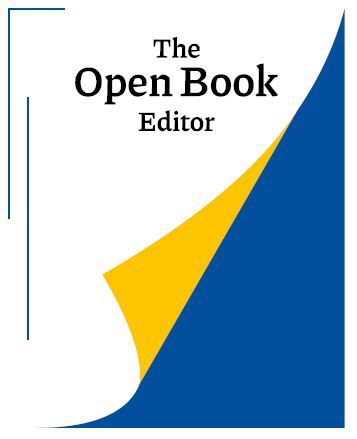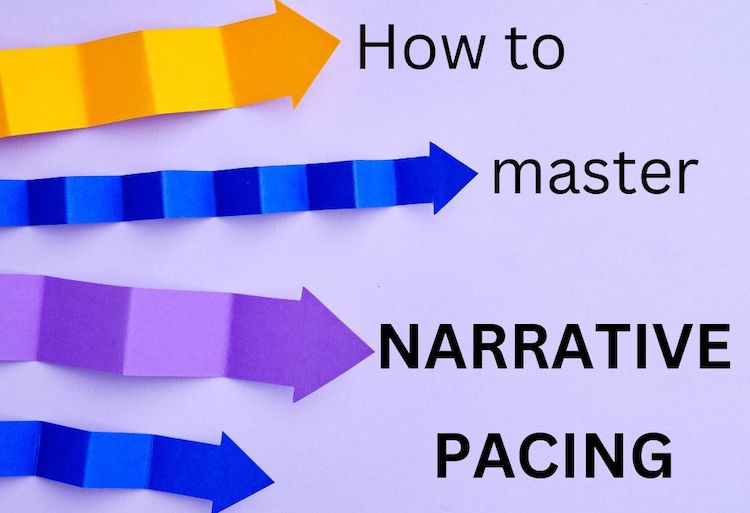Have you ever read a book that felt like it just swept you along? Great narrative pacing can make for an un-put-downable story, but it’s not always an easy skill to master. You don’t want to fatigue your readers with a non-stop rapid pace, nor bore them with an overabundance of slow scenes.
Being able to master great narrative pacing is a question of balance. And to write a brilliant book, you need a combination of quick and slow pacing. But how do you find the right narrative harmony? Let’s look at effective narrative pacing and the best way to implement it when writing an engaging and gripping story.
What is narrative pacing?
Narrative pacing is how fast or slow your story develops. Look at your book as a musical score; the tempo will speed up in some moments, while it slows down in others. All of this contributes to a great overall narrative.
The speed of your pacing can be determined by the way you plot each of your scenes and how quickly you feed information to your reader. For example, a descriptive scene with more exposition will slow down the tempo of your novel. On the other hand, scenes with great, snappy dialogue tend to speed it up.
Neither tempo is better than the other of course. A slow tempo can be just as impactful as a fast one. Slowing down the pace can sometimes build suspense, while speeding it up can heighten tension. It depends on how, and when, you use them! Knowing how and when to use each is essential to writing a well-balanced book.

Why should I care about pacing?
You should care about good pacing because, without it, your story will fall flat. It’s important that you don’t rely too much on one type or the other. Too fast for too long can be taxing for readers, while too slow can be boring.
Hence, it’s important to master the balance between these two types of narrative pacing. This will help you write a more marketable novel that’ll stand out from the agent slush pile (as long as you have a strong query package, too).
When you master narrative pacing, you’ll be able to keep your reader—be it a literary agent, a publishing house editor, or a regular bookworm — engaged with the story until the very last page.
Tips for mastering narrative pacing
Remember to ‘breathe’
Breathers are an important part of narrative pacing. Sure, it’s great to give your readers doses of excitement, but you need to give them space to recover, too.
Breathers offer great opportunities for fleshing out your characters so they feel more real and believable. During these moments of calm, you can share a character’s thoughts and memories. Or have them interact with someone else and reveal something important about themselves and the narrative. Make sure these retrospective moments still connect in some way to the overall story so you’re still advancing the plot in some way.
While dramatic scenes can be really fun to write, breathers are just as vital to your story. Aim for a breather in every scene, but keep it concise so as not to overdo it. Alternatively, if a chapter requires excitement from beginning to end, find a way to insert a breather at the start of the next chapter.

Time your reveals
Well-timed reveals are essential if you want to master great narrative pacing. If you reveal all your important information too soon, you risk your readers losing interest in the story, either because there’s nothing to tell them later or because they’ve been overloaded by all the information. Likewise, if you draw it out too much, your readers may become detached or bored.
Every novel contains suspense, no matter the genre. There is always an overarching question governing a book’s narrative. One that keeps readers turning the pages because they want to know the answer. Let’s take a look at two examples:
- Gone Girl by Gillian Flynn is a psychological thriller. The overarching question in this novel is: What the happened to Amy Dunne? The reader keeps turning the pages because they want to uncover the mystery of why Amy disappeared and whether her husband murdered her.
- The Sound and the Fury by William Faulkner is literary fiction (and perhaps one of the densest classics ever written). The overarching question is: What leads to the downfall of the Compson family? The reader wants to connect the dots and understand the dramas that contributed to this family’s decline.
These novels may be very different genres, but they both have suspense, just in their own ways. Both Flynn and Faulkner use great narrative pacing to doll out information in increments. Each chapter serves a purpose and has a clue that builds towards the greater overarching question.
Something to watch out for when timing your reveals is too much repetition. Hitting your reader over the head with the same clues, again and again, will slow the pace dramatically. To master narrative pacing, make sure you are providing new information that’s well spaced throughout the book. This will keep your readers engaged.

Try out different orders of events
It’s natural to want to write scenes in a linear way; i.e. in the order that events occur. However, switching up the order can contribute to great narrative pacing too.
In medias res (in the middle of things) is a good narrative tool to master. Instead of starting at the beginning of a scene, you start in the middle of the action and parse out the details at a later time. Dropping your reader in the middle of things can increase tension and even add a sense of mystery. This works well if you’re thinking of using a prologue or as a way to start your opening chapter with a bang.
However, you don’t need to reserve in medias res for the start of your book. You can employ it at any time to ramp up suspense or to speed up your narrative pacing. But, like with any writing tool, be wary of overuse! Your readers will become weary if every chapter starts in the middle of the action.

Vary your sentences
Varying your sentence length can create more engaging narrative pacing. For example, if you’re worried about your reader becoming bored with a world-building section of your book, throw in a few shorter sentences (as thoughts or dialogue) to break it up. Remember that you can reveal a lot about your world through interactions between your characters. This also helps prevent info-dumping—where you overload your reader with information.
Of course, the opposite works, too! If a scene is becoming hard to follow because things are moving too quickly, include a few longer sentences. Describe what your characters are doing or flesh out their surroundings.
How can I tell if I have good narrative pacing?
As the author, it’s tough to be objective about your own work. Here are a few tips to help you find the right balance between slow and fast narrative pacing:
- Read your manuscript aloud. During the self-editing stage, be sure to read your work out loud. If you start to stumble over your words or you’re getting a little bored, you might be encountering a pacing issue.
- Give it to beta readers. Join a writing group or find beta readers in the online writing community. Ask your beta readers to tell you if there are moments when they get bored or skip over sections in your manuscript. Likewise, ask if there are any points where the narrative moves faster than they’re able to keep up with. It’s vital other people read and critique your work before you even consider sending it to agents or self-publishing. You NEED these objective opinions to make your book better.
- Hire a professional editor. A great book editor will pick up on pacing issues right away and work with you to resolve them. There are a variety of editing options, from developmental and copy-editing to proofreading So, if you’re not sure what your book needs, or what a qualified editor does, contact us to have a chat!
Many aspects of writing a book can feel intimidating—and narrative pacing can certainly seem hard to master. But like with any skill, the more you practise, the better you’ll get. Taking the time to master narrative pacing will pay off BIG in the long run and will get easier over time as you develop a feel for good pacing.


